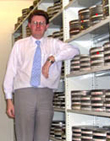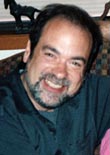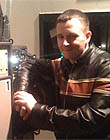|
|
 
|
|
Author
|
Topic: Fader level for Kong: Skull Island?
|
|
|
|
|
Leo Enticknap
Film God

Posts: 7474
From: Loma Linda, CA
Registered: Jul 2000
|
 posted 03-18-2017 12:15 PM
posted 03-18-2017 12:15 PM





You'll likely get many different answers.
Theoretically, if the DCP is normalized per DCI requirements (to -20dBFS) and the audio processor is tuned per Dolby requirements (85dB measured in the house from the stage channels when playing pink noise recorded at unity and the fader set to 7, etc.), then you should play it at 7.0 in order to give your customers the audio experience desired by the filmmakers.
BUT ... this is usually way, way too loud for most customers to tolerate. When we do studio-supervised shows and are required to play movies at this level, there are almost always customer complaints that it is too loud. I remember one such show - a documentary about Kurt Cobain - in which I went into the auditorium with a dB meter app on my phone, and measured a sustained 95-96 during one of the musical numbers. California law actually states that in a workplace, employees cannot be exposed to more than 8 minutes in every 8 hours of 93 or higher! If any of our staff members had been watching the movie, we'd have violated that law after the first half an hour. I could hear the lyrics as he screeched and spluttered his way through the numbers through the booth wall, clearly, with no monitor speakers on at all. I could feel them, too.
That's an extreme example, but for most mainstream movies, if you followed the "play it at 7" rule on a correctly tuned processor, you'd be into the 90s for a significant proportion of the show. So, of course, almost no theaters do. Depending on the film, a guess at audience preference (the house for a Jane Austen costume show will want a lower level than an action/adventure movie), the normalization of the audio track and the size of the audience, we usually play at between 5.5 and 6.5, and most often in the high 5.X range.
As an example, I played The Hateful Eight at 6.5 last night (actually, overture at 6.8 and then gently backed it off to 6.5 during the opening shots of the stagecoach, leading to the first dialogue scene), because it's mainly quiet (ish) dialogue interspersed with occasional bursts of loud noise (gunshots, mainly) that are supposed to have dramatic effect; added to which I guessed that it was an audience who would prefer it a little above the norm. I'd play most studio prints or DCPs to a half full house in that auditorium at 6.0 to 6.2.
| IP: Logged
|
|
|
|
Martin Brooks
Jedi Master Film Handler

Posts: 900
From: Forest Hills, NY, USA
Registered: May 2002
|
 posted 03-19-2017 06:27 PM
posted 03-19-2017 06:27 PM





I've made this comment before, but sound levels have gotten out of hand and I think directors and mixers frequently don't understand what dynamic range means. This isn't just a problem in movies, it's a problem at concerts as well. Part of the problem I think is that we have a generation of creators who never heard great sound. Levels used to be self-restricting, due to the limitations of the equipment.
Another problem is insecure directors who think that if they just make everything really loud, it will create the emotion that they think their film is lacking. But it doesn't - it just creates tedium.
Personally, I get really pissed off when I have to hold my ears or wear hearing protection during a movie. You want to have a loud explosion or bullet or door slam or machine gun momentarily, fine. But it's insane (IMO) to have a 10-15 minute section of the movie at maximum volume, beyond the threshold of pain, where the mix turns to mush and you can't understand the dialog. Any mix in which audience members stick their fingers in their ears should be considered a massive failure.
But...it's only going to get worse. They do it because they can.
I love the idea of Dolby Atmos, but most of the Dolby Atmos mixes that I've heard so far have not made good use of the capability. It's rare that I hear the overheads in use. Instead of trying to blow out the back wall of the theater, directors should make the sound immersive, as it's supposed to be in these new sound formats.
I was very disappointed when the Atmos mix of the recent Tarzan movie didn't place the sounds of the forest and the rain all around us with different sounds in different speaker locations. On the up side, I don't remember that movie being too loud, so I give them credit for that.
Back in the 70mm film days, a good mix on a good print in a good theater used to really affect me. Although my high-frequency hearing is certainly not what it was back then, a great soundtrack would actually put a smile on my face and make me sweat. And i could always tell if the sound was going to be good within ten seconds of hearing the beginning of the soundtrack. I never feel like that today. IMO, today's mixes largely lack any kind of refinement and they frequently lack presence.
| IP: Logged
|
|
|
|
|
|
|
|
|
|
All times are Central (GMT -6:00)
|
|
Powered by Infopop Corporation
UBB.classicTM
6.3.1.2
The Film-Tech Forums are designed for various members related to the cinema industry to express their opinions, viewpoints and testimonials on various products, services and events based upon speculation, personal knowledge and factual information through use, therefore all views represented here allow no liability upon the publishers of this web site and the owners of said views assume no liability for any ill will resulting from these postings. The posts made here are for educational as well as entertainment purposes and as such anyone viewing this portion of the website must accept these views as statements of the author of that opinion
and agrees to release the authors from any and all liability.
|

 Home
Home
 Products
Products
 Store
Store
 Forum
Forum
 Warehouse
Warehouse
 Contact Us
Contact Us




 Printer-friendly view of this topic
Printer-friendly view of this topic













